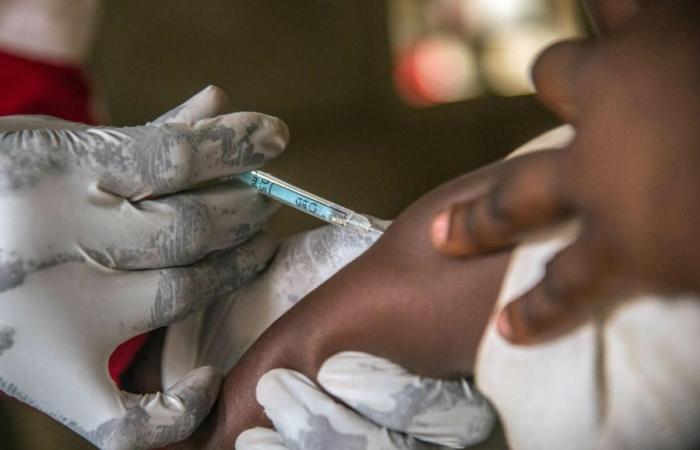Almost everywhere in the world and especially in Africa, there is a resurgence of measles which risks delaying the global objective of eliminating it by 2030.
There is a resurgence of measles cases. The WHO announces that there will be 10.3 million cases of measles in 2023. An increase of 20% compared to 2022, according to new estimates from the World Health Organization (WHO) and the Centers for United States Diseases Control and Prevention (CDC). Insufficient vaccination coverage globally is behind the increase in the number of cases. However, continue the structures, two doses of measles vaccine help prevent the disease. “Yet in 2023, more than 22 million children have not received their first dose of vaccine. Globally, it is estimated that last year, 83% of children received their first dose of measles-containing vaccine, while only 74% received the recommended second dose. It should be noted that at least 95% coverage with two doses of measles vaccine “is necessary in every country and community to prevent epidemics and protect populations against one of the most contagious human viruses in the world” . “The measles vaccine has saved more lives than any other vaccine over the past 50 years,” said Dr Tedros Adhanom Ghebreyesus, WHO Director-General. “To save even more lives and prevent this deadly virus from harming the most vulnerable, we must invest in vaccinating every person, no matter where they live.”
“The number of cases of infection with the measles virus is increasing around the world, compromising the health of populations and putting lives at risk,” said Cdc Director, Dr. Mandy Cohen. “The measles vaccine is our best protection against this virus, and we must continue to invest in efforts to expand access to it.”
WHO recalls that due to gaps in vaccination coverage globally, 57 countries experienced significant or disruptive measles outbreaks in 2023, a number up almost 60% compared to the 36 countries in the world. the previous year, with all regions affected except the Americas. “The WHO regions of Africa, Southeast Asia, Europe, Eastern Mediterranean and Western Pacific have seen a sharp increase in the number of cases. Nearly half of all large or disruptive outbreaks have occurred in the African region. An unacceptable number of deaths due to the increase in measles cases,” notes the WHO.
It should be noted that the new data shows that around 107 thousand 500 people, mainly children under 5 years old, died from measles in 2023. “Although this is a decrease of 8% compared to compared to the previous year, far too many children are still dying from this preventable disease. This slight reduction in deaths is mainly because the increase in cases has occurred in countries and regions where children with measles are less likely to die, due to better nutritional status and better access to health services. Even when people survive measles, the disease can cause serious health effects, some of which persist for life. Infants and young children are most at risk of serious complications from the disease, including blindness, pneumonia and encephalitis (an infection causing inflammation of the brain and potentially brain damage),” continues WHO. .
Today, the goal of eliminating the disease globally, as set out in the 2030 Agenda for Immunization, is under threat. “By the end of 2023, 82 countries had achieved or maintained measles elimination. This week, Brazil was confirmed to have achieved this again, making the WHO Region of the Americas once again free of endemic measles. With the exception of the African Region, at least one country in all WHO regions has eliminated the disease,” continues the World Health Organization. She appeals: “Urgent and targeted efforts by countries and partners, particularly in the African and Eastern Mediterranean regions, and in contexts of fragility, conflict and vulnerability, are needed to fully vaccinate all children with two doses of measles vaccine. To do this, we must sustainably implement effective systematic vaccination programs and carry out quality campaigns to achieve high coverage when these programs are not yet sufficient to protect each child.”






